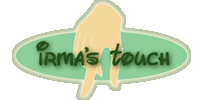- QI GONG MOVEMENTS
氣功 [ qì gōng ] discovering yourself
Qi Gong can be described as a mind-body-spirit practice that improves one’s mental and physical health by integrating posture, movement, breathing technique, self-massage, sound, and focused intent, is a system of coordinated body-posture and movement, breathing, and meditation used for the purposes of health, spirituality, and martial-arts training.
Qi Gong or Chi Kung, Qi is a concept from traditional Chinese culture that roughly means vital energy, information, breath or spirit.
The second character in qigong, “Gong,” means cultivation or mastery ..
Qigong is therefore sometimes translated as “vital energy cultivation” or “mastery of your energy.”
The Benefits of Qigong –
Qi Gong opens the flow of energy in meridians used in acupuncture and Chinese medicine. It enhances our ability to feel the Life Force underlying the physical world and to deepen our communication with it.
Physically, slow gentle Qi Gong movements warm tendons, ligaments, and muscles; tonify vital organs and connective tissue; and promote circulation of body fluids (blood, synovial, lymph). Thousands of studies have shown qigong effective in helping to heal life challenges ranging from high blood pressure and chronic illness to emotional frustration, mental stress, and spiritual crisis.
CLASSES :
- Xi Sui Jing ( Bone Marrow Cleansing )
- Wu Xing ( Five Elements )
- Liu Zi Jue ( Six Healing Sound )
- Zhan Zhuang ( Post Standing )
- Shaolin Ba Duan Jin ( Eight Brocades )
- Shaolin Yi Jin Jing ( Muscle Tendon Transformation )
- Shaolin Shi San Shi ( 13 Louhan Movements ) – * to add
- Shaolin Nei Gong ( Inner Cultivation ) – * to add
5 ELEMENTS :
- Elemental Healths: These are fundamental visualizations, movements and breathing exercises which help to purify the mind and heart through 5 elements. They help to release anxiety and transform negative emotions into positive ones.
8 PIECES OF BROCADES :
- Ba duan jin (8 Pieces of Brocade): This is a set of 8 simple exercises which has been practiced unchanged throughout China for nearly 1000 years. Originally, it was used by the Chinese army to give strength and health in harsh adverse conditions. Nowadays, the set is performed to invigorate and strengthen the whole body including the internal organs. One set takes about 10 minutes to do and can be done daily for maximum benefits.
10 ZHAN ZHUANG :
- Zhan Zhuang: This is a sequence of standing meditation postures, which is fundamental to the practice of Qi Gong and Tai Chi. Practiced regularly, Zhan Zhuang postures help to develop concentration and mental and physical strength. They are the basis of developing internal energy.
The difference between Tai Chi and QiGong :
- Tai Chi is Martial Art – QiGong is not.
- Tai Chi has strict rules of principles thus more complex, while QiGong is more relaxed with modifications ( simpler)
- Tai Chi needs to be memorized – QiGong is optional, students can just follow Sifu.
- Tai Chi requires knowledge of movements applications while QiGong has meridians to understand
- Tai Chi Forms strictly done in a sequence of their postures – QiGong may repeat a chosen movement/s for as many times as needed for a specific health purpose
- Tai Chi relates to a family style – QiGong relates to nature, humans, and animals
- Tai Chi needs more space to practice as they move around – QiGong requires smaller areas as their movements are tighter or stationary.
The same or similar points of Tai Chi & QiGong :
- Both are of Chinese origins
- Both are ancient arts under the QiGong umbrella
- Both adopted the philosophy of Yin Yang
- Both are done in mostly slow movements and low impact
- Both focus on internal energy, body movements, and spirit
- Both are all ages activities
- Both can be done indoors or outdoor

